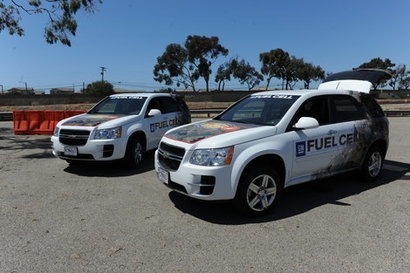
The researchers have discovered a new catalyst that significantly improves the efficiency of water electrolysis in alkaline conditions. Electrolysis of water to oxygen and hydrogen is crucial to enabling emerging renewable energy technologies for the production of hydrogen. Currently, there are a number of challenges for the widespread adoption of water electrolysers, including high energy consumption, high cost and limited durability. For example, the use of expensive precious metals such as platinum and iridium limits implementation at large scale.
Energy security combined with environmental problems such as climate change have encouraged the development of advanced energy storage and conversion systems, including the development of higher power and more energy dense storage devices, such as low-temperature regenerative fuel cells and rechargeable metal–air batteries. These operate through the electrocatalysis of oxygen, involving the electrolysis of water through oxygen evolution reaction (OER) and the reduction of molecular oxygen through oxygen reduction reaction (ORR). These processes both require the use of an electrocatalyst due to their slow reaction. The most active catalysts for ORR are Pt-alloys and other precious metals. However, the formation of an oxide surface film at high potentials, especially in the case of Pt, decreases their ability to catalyse the OER. This problem, coupled with the scarcity and restrictive cost of Pt group metals represent major roadblocks to the mass adoption of fuel cells and metal-air batteries in renewable energy technologies.
“The generation of oxygen from water remains a significant bottleneck to development of water electrolysers and also in the development of fuel cell and metal-air battery technologies” said Tyler Mefford, a graduate student at the University of Texas at Austin and lead author of the study. “If we could develop catalysts made with Earth abundant materials that could reversibly and efficiently electrolyze water into hydrogen and oxygen, we could have affordable hydrogen generation from renewables; and with that the possibility of electric cars that run on water with ranges similar to gas powered cars. To develop these catalysts, we need to understand at the atomic level how these processes proceed and what factors of the catalysts influence their performance.”
In order to overcome the limitations of current materials, the research team, led by Professor Keith Stevenson, synthesized a series of cobalt based perovskite oxide catalysts where the properties of the materials could be controllably modified by the substitution of the element strontium into the catalyst structure. Collaborations with Professor Alexei Kolpak from Massachusetts Institute of Technology (MIT) and Professor Artem Abakumov from Skolkovo Institute of Technology enabled the team to precisely measure the surface and bulk properties of the catalysts and model how the alkaline water electrolysis reaction proceeds.
Two crucial parameters were identified as important to the performance of the resultant catalysts - the covalency of the cobalt-oxygen bond, or how close in energy the electrons in cobalt are to the electrons in oxygen, and the amount of oxygen vacancies, sites in the crystal structure that should generally have an oxygen atom but are vacant in the very active catalysts. Using these parameters, the team developed the catalyst strontium cobalt oxide that can perform the water electrolysis reaction approximately twenty times better than the leading industrial catalyst, IrO2, at a significantly lower cost.
The team found that the enhanced performance of the catalyst was facilitated by participation of the oxygen atoms inside of the surface of the crystal. Previously, the assumption had been that the reaction proceeded through species exclusively at the interface of the catalyst and water.
Although more work needs to be done to further increase the performance of water electrolysis catalysts, the work provides a deeper mechanistic understanding of the chemistry of active catalysts. The work also clarifies materials design strategies to accelerate the discovery of additional Earth abundant non-precious metal oxide catalysts.
The results of the research were recently published in the journal Nature Communications.
For additional information:

